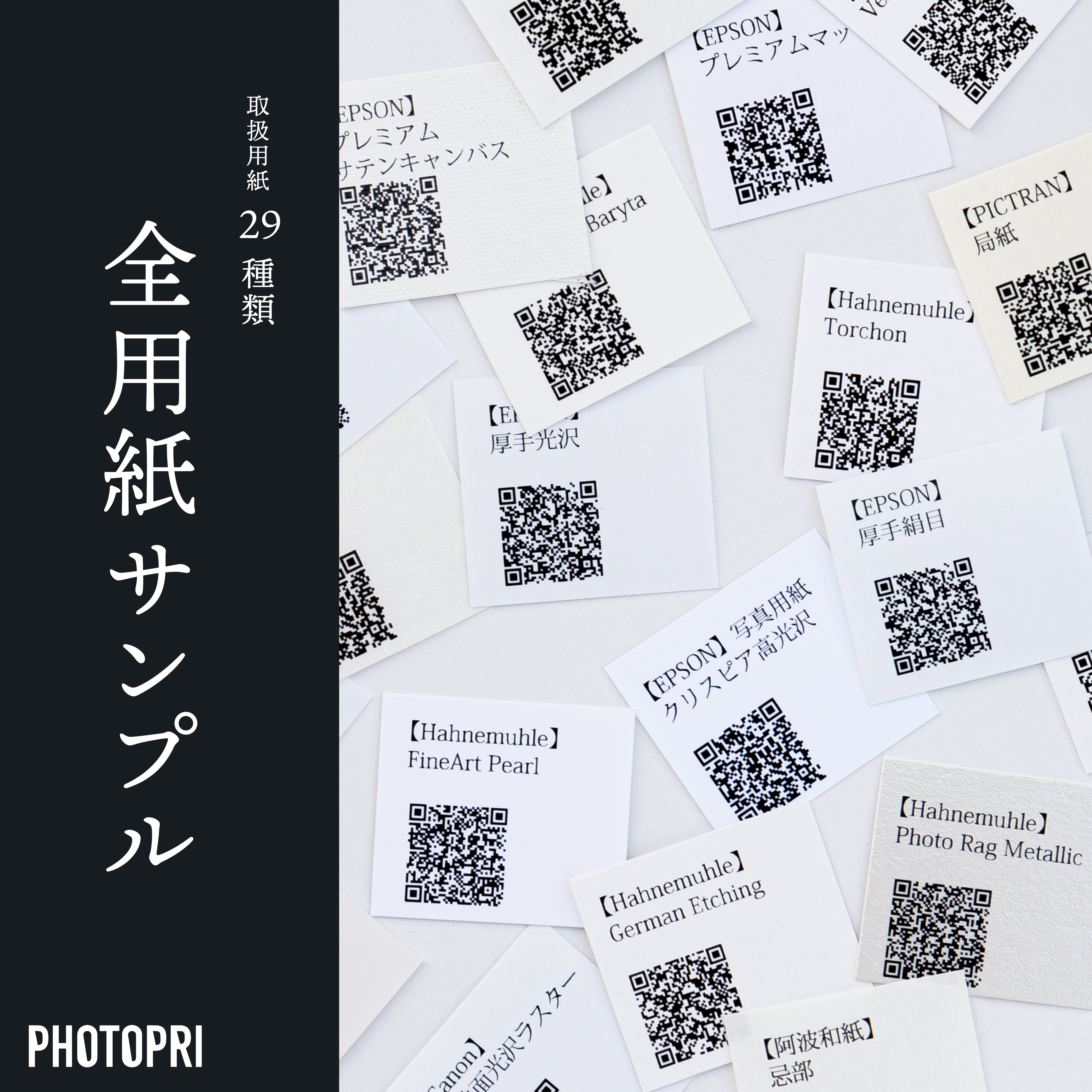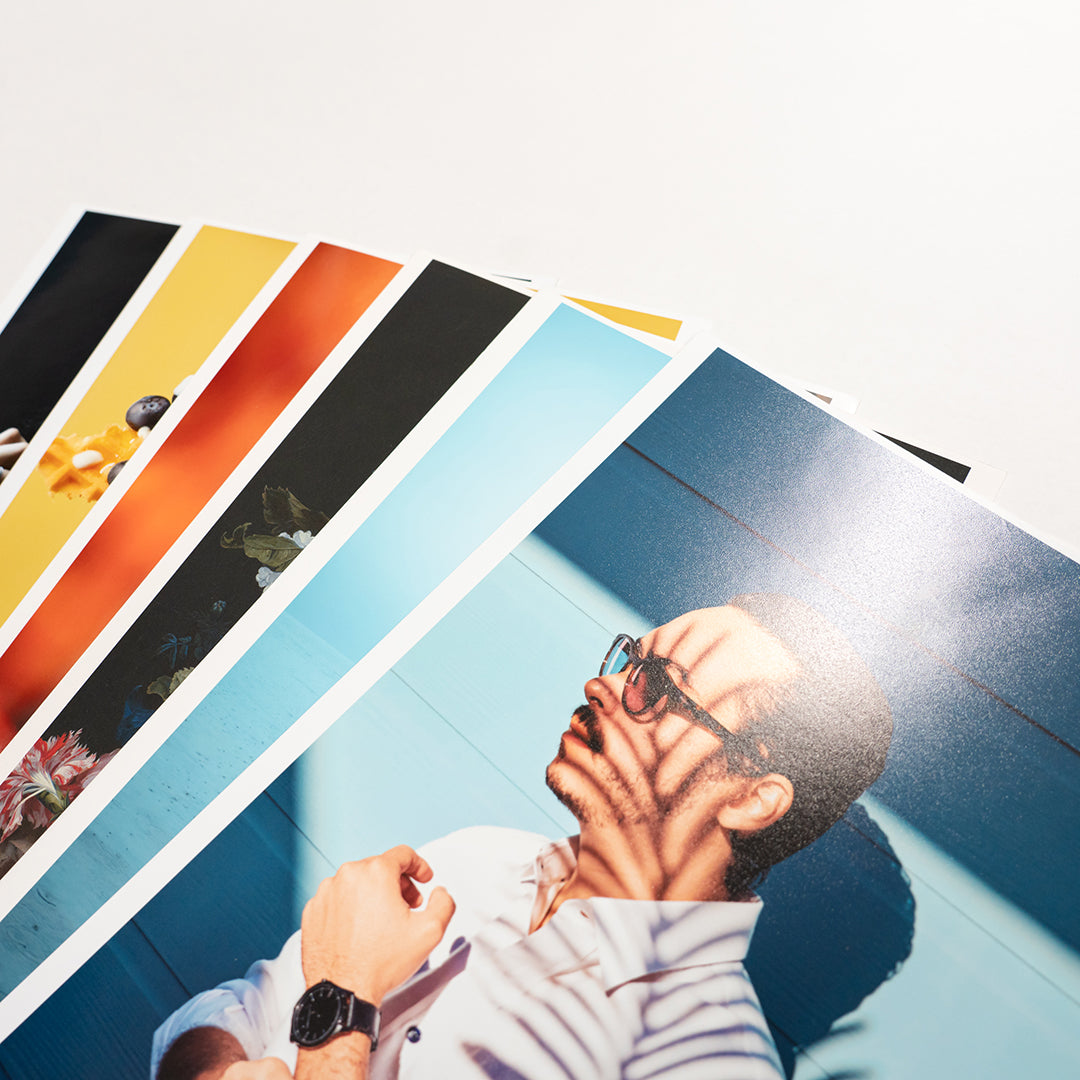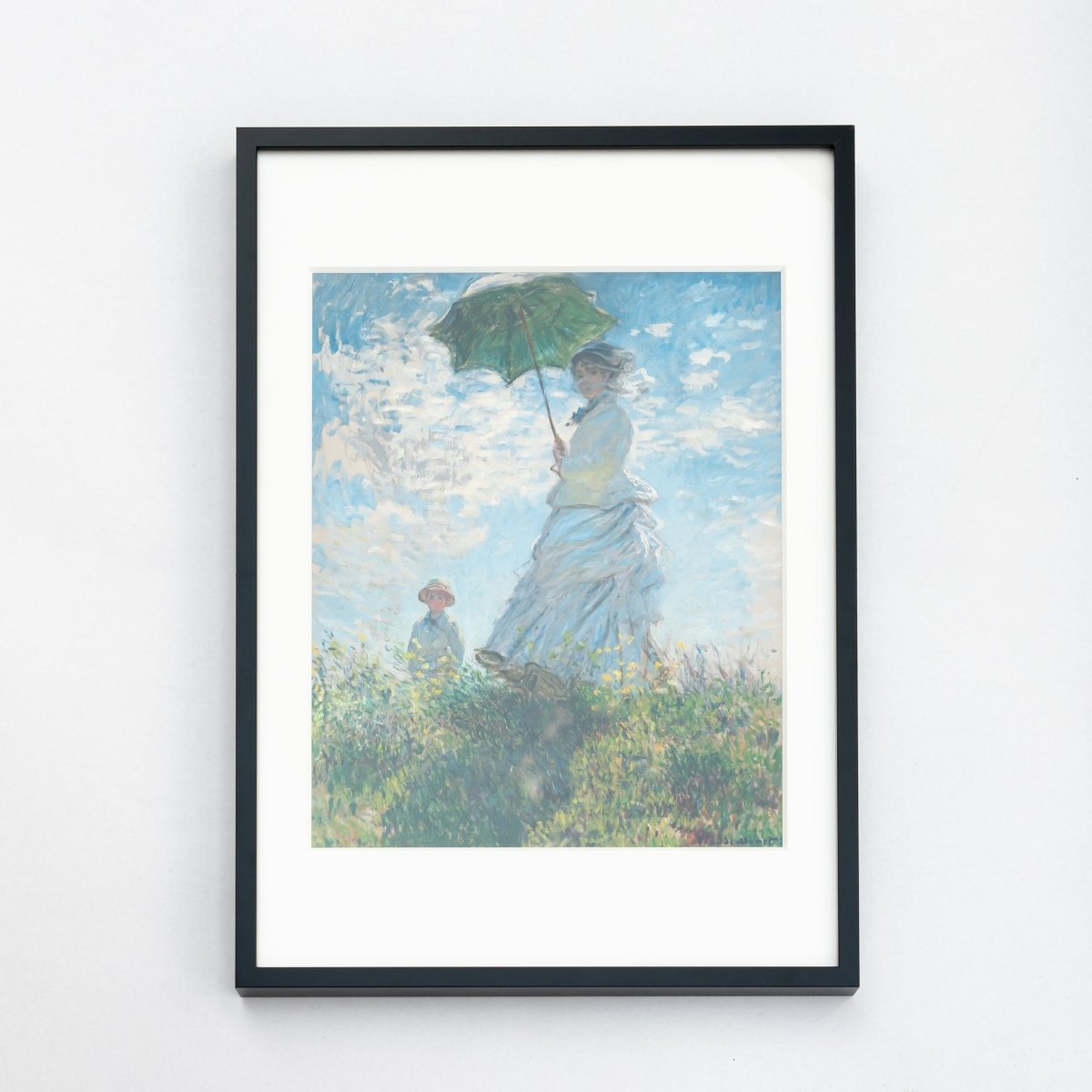[Differences in paper] Thorough comparison of 4 types of paper: matte paper, glossy paper, silky paper, and Japanese paper!
table of contents
この記事について

PHOTOPRI(フォトプリ)
プロ品質の写真プリントサービス
「PHOTOPRI(フォトプリ)」は、写真展クオリティのプリントを提供する専門店です。一枚一枚の色を丁寧に調整し、30種類以上の用紙から最適なものを提案。あなたの作品が持つ魅力を最大限に引き出すお手伝いをします。大切な作品を、最高の形で残しませんか?
[Complete Edition] Photo Paper Selection Guide: Matte, Glossy, Silk, and Washi Paper, and Tips for Finding the Perfect One
You have precious photos taken with a single-lens reflex camera or smartphone. But when you think, "I want to print them on photo paper!", have you ever been confused by the sheer number of different types? Different manufacturers call them different names, and different people recommend different types of paper... Many of you have probably been troubled and wondered, "Which one should I choose?"

The world of photo paper is deep and there is a lot of fun to be had choosing it.
Typical categories of photo paper include "matte paper," "glossy paper (photographic paper)," "silk-grain paper (photographic paper)," and "washi paper." In this article, we at PHOTOPRI will take a deep dive into these major paper categories, thoroughly comparing and explaining their characteristics, differences in finish, and the types of work they are suitable for. We hope this will help you express your work in the best possible way.
After reading this article you will learn:
- Characteristics and differences of major photo papers (matte, glossy, silk, washi paper, etc.)
- The photographic genres and expressions that each paper is suitable for
- Examples of high-quality paper recommended by PHOTOPRI
- Tips for choosing the right paper and convenient services
Please note that the papers introduced in this article are mainly the most popular ones from the extensive lineup we carry at PHOTOPRI . For more papers, please see our paper list page .
Why is PHOTOPRI so particular about paper selection?
PHOTOPRI is not just a printing service, but our philosophy is to help artists "give shape to their work." In order to provide the professional quality prints required for photo exhibitions and art shows, not only the performance of the printer but also the selection of paper is extremely important.
- RGB direct printing for rich color expression: To make the most of the sRGB and Adobe RGB color gamuts standard for digital cameras, RGB direct printing is supported without CMYK conversion, reproducing vivid, deep colors that are close to the images seen on the monitor.
- Ultra-high-resolution printing at 2880 x 1440 dpi: Captures every detail of the work, resulting in a sharp and powerful finish.
- Long-lasting durability with carefully selected art papers and genuine inks: We offer a wide selection of art papers, including those from world-renowned manufacturers such as Hahnemühle, Canson, and Pictorico, as well as traditional Japanese washi paper. When combined with genuine Epson inks, these papers offer lightfastness of over 30 years, ensuring the long-lasting value of your artwork.
It is precisely because of this commitment that we are able to thoroughly understand the characteristics of each individual sheet of paper and make suggestions that are optimal for our customers' artwork. Let's take a look at the specific types of paper we use.
[By type] A thorough comparison of the characteristics and finishes of major photo papers
Here, we will explain the characteristics, finishes, and recommended uses of the four major paper categories: "matte paper," "glossy paper," "silk-like (luster/satin)," and "washi" paper, using specific paper examples handled by PHOTOPRI.
1. Matte paper: A subdued texture for artistic expression
Matte paper is a non-glossy paper with a reduced surface gloss. Its low light reflection makes it easy to read from any angle and fingerprint-resistant. Its soft, subdued appearance makes it suitable for artistic photographs and illustrations.

Examples of matte paper available from PHOTOPRI: [EPSON] PX Premium Matte Paper
[EPSON] For PX Premium Matte Paper:
This high-quality matte paper (0.25mm thick) boasts a particularly wide color reproduction range among Epson's genuine matte papers. It has a smooth texture and a very simple appearance. While giving off the "soft" impression unique to matte paper, the surface texture is smooth and the colors adhere well.
Compared to glossy paper, it produces a more subdued, deep finish. It is ideal for retro, emotional, and classical photos. It is also very popular for black and white photography.
General characteristics of matte paper:
- Advantages: Less light reflection makes it easier to read, fingerprint resistance, calm and elegant finish, and a unique texture as the ink soaks into the paper.
- Disadvantages: Somewhat susceptible to rubbing (especially dark areas), color vividness and sharpness are lower than glossy paper.
- Recommended for: Black and white photography, portraits (especially softer), fine art reproductions, illustrations, calming landscapes, and exhibitions.
Handling Precautions:
Matte paper has a delicate surface, so please be careful not to touch or rub the printed surface. Even slight scratches can be noticeable, especially in areas with high density. We recommend wearing gloves when handling the artwork to prevent fingerprints and skin oils from adhering to the surface.
At PHOTOPRI, other popular matte fine art papers include 100% cotton papers such as Hahnemuhle Photo Rag .
2. Glossy paper: Good for vivid and sharp expressions
Glossy paper has a glossy surface and is characterized by its smooth texture. It takes on ink well, making photographs appear vivid and reproducing details sharply. It is one of the most common types of photo paper and is used for a wide range of purposes, from snapshots to landscape photography.

Examples of glossy paper available from PHOTOPRI: [EPSON] Professional Photo Paper, Thick Glossy
For EPSON Professional Photo Paper, Thick Glossy:
This paper (0.27mm thick) is based on RC paper (resin coated = synthetic resin coated) and features an extremely high gloss finish. Its "smooth and shiny" finish is the perfect description, giving your photos a rich, luxurious finish. It is often used by professional photographers and artists for solo exhibitions, and its reproducibility is guaranteed.
This paper offers exceptional color vibrancy, richness of tones, and sharpness, making it ideal for landscape photography, advertising photography, and other vibrantly colored works.
General characteristics of glossy paper:
- Advantages: Vivid color reproduction, high sharpness, rich gradation expression, and a luxurious finish.
- Disadvantages: Fingerprints and scratches are easily visible, and light reflections can make it difficult to see.
- Recommended works: landscape photography, snapshots, commemorative photos, commercial photography, posters, and works with vibrant colors in general.
Handling Precautions:
Glossy surfaces are very delicate, and even the slightest scratches or fingerprints are easily noticeable, so they require careful handling. At PHOTOPRI, we pay particular attention to this when inspecting products. When viewing, adjusting the lighting angle can help reduce reflections.
PHOTOPRI also offers glossy fine art paper such as Hahnemuhle FineArt Pearl , which allows for deeper expression.
3. Silk-like finish (Luster/Satin/Semi-gloss): Elegant gloss and excellent texture expression
Silk-finish paper has characteristics that are somewhere between glossy and matte paper. Its surface is finely grained (fine grain surface), giving it a subdued, yet elegant luster. It is also known as "laster," "satin," or "semi-gloss."

An example of matte paper available from PHOTOPRI: [EPSON] Professional Photo Paper, Heavyweight, Silk
[EPSON] Professional Photo Paper, Heavyweight, Silk:
The surface is finely grained and has a subdued luster (0.27mm thick). Compared to highly glossy paper, it reduces reflections and produces a soft, elegant finish. The moderate glossiness makes photos easy to view and gives them a luxurious feel.
This paper is particularly good at beautifully reproducing the texture of people's skin, making it ideal for portrait photography. It also has the advantage of not losing its appeal in a variety of lighting environments, such as exhibition halls. It's also extremely popular among professional photographers, making it a reliable choice.
General characteristics of silk:
- Advantages: Elegant gloss, fingerprints are less noticeable than on glossy paper, high texture expression, and light reflection is moderately reduced.
- Disadvantages: Although not as bad as matte paper, care may be needed when rubbing hard.
- Recommended for: portraits, wedding photos, exhibitions, tranquil landscapes, and fine art reproductions.
PHOTOPRI also offers the popular Canon Fine-Grain Gloss Lustre , which has the same silk-like texture, and the easy-to-handle PICTORICO Semi-Gloss Paper . It's interesting to compare the subtle differences in the surface quality of each.
If you are wondering, "What is the difference between silk and fine grain?" please refer to this article.
[Reference article] What is the difference between silk and fine grain? Comparing EPSON thick silk and Canon fine grain raster
4. Washi paper: Add individuality to your work with its unique texture and warmth
Washi paper is a traditional Japanese paper made from plant fibers such as kozo and mitsumata. It is characterized by its unique texture, warm feel, and excellent durability. Many types of washi paper are compatible with inkjet printers, adding depth and character to artwork and Japanese-themed photographs.

An example of Japanese paper available at PHOTOPRI: [Awa Washi] Kozo, thick, white
[Awa Washi] Kozo thick white paper:
This thick Awa washi paper (0.23mm thick) is made from kozo paper and is produced in Tokushima Prefecture. Its soft texture and rustic feel evoke a sense of Japanese tradition and elegance. While it may feel thinner than other Western papers, the characteristics of the kozo fiber make it more durable than it appears.
When printed, it has the same subdued finish as matte paper, but the unique texture and feel of Japanese paper gives it a unique "rustic" and "warm" feel, and a nostalgic feel. It enhances the appeal of Japanese-themed works such as Japanese landscapes, traditional culture, ink painting-style illustrations, and calligraphy.
General characteristics of washi paper:
- Advantages: Unique texture and warmth, excellent durability and preservation, gives individuality and dignity to works.
- Disadvantages: Due to the characteristics of the paper, it may not be suitable for situations where extremely sharp reproduction or vivid colors are a top priority. Because it absorbs ink well, colors may appear dull.
- Recommended works: Japanese paintings, ink paintings, calligraphy, Japanese-style illustrations, Japanese landscape photography, warm portraits, and fine art reproductions (especially Japanese art).
PHOTOPRI also offers other types of washi paper, such as Awa Washi Unryu Thin White . Each type has a different fiber texture and thickness, so you can choose the one that best suits your artwork.
Summary: What paper is best for your work? PHOTOPRI's recommendations
We've compared four major paper categories, but which one should you choose? Let's summarize the features of each.
| Paper Category | Key Features | Image of the finished product | Recommended work genre |
|---|---|---|---|
| Matte paper | Non-glossy, subdued texture, fingerprint resistant | Elegant, soft, artistic | Monochrome, illustrations, art reproductions, serene landscapes |
| glossy paper | High gloss, vivid color, and high sharpness | Crisp, rich and dynamic | Landscapes, snapshots, advertisements, posters |
| Silky texture | Elegant semi-gloss finish, excellent texture expression, low reflection | Moist, luxurious, three-dimensional | Portraits, weddings, exhibitions |
| Japanese paper | Unique texture, warmth, and high durability | Rustic, traditional, unique | Japanese painting, calligraphy, Japanese-style illustrations, Japanese landscapes |
If you want vibrant colors and sharpness:
We recommend glossy or silk-like paper . These papers are excellent at expressing tones and reproducing rich colors. Glossy paper in particular is ideal for works that emphasize power and vividness, such as landscapes and architecture.
For a soft texture or artistic expression:
Matte paper is ideal. Its elegant finish with a subdued sheen faithfully reproduces pastel-like soft colors and retro, emotional atmospheres. It is also popular for monochrome photography.
If you are looking for a luxurious feel, excellent texture and a calm display effect:
Silk-like paper is recommended. The fine grain texture gives the photo a three-dimensional feel, and in portraits it beautifully and realistically depicts the skin texture. Another advantage is that it is less susceptible to light reflections, even in exhibition halls.
If you want to add a touch of individuality and Japanese warmth to your work:
Try using washi paper . Its unique texture and feel add depth and elegance to Japanese-style subjects or works that you want to express a warmth. However, it is best suited to expressing atmosphere, so if you are looking for extreme sharpness, consider using other paper.
A word of advice from PHOTOPRI:
If you're unsure which paper to choose, we recommend starting with a versatile photographic paper-based paper (glossy or silk-like). These papers often bring out the beauty of your photographs and create a luxurious feel. Then, try using more distinctive papers like matte paper or washi paper to suit your style and the theme you want to express, which will help broaden the worldview of your work.
Paper Selection Q&A: Frequently Asked Questions
Q1: The color I see on the monitor is quite different from the printed color...
A1: This may be due to improper monitor calibration or the color management settings of the printer driver. PHOTOPRI offers a color correction service (for a fee) to achieve more faithful color reproduction. We also recommend submitting RGB data. Please also refer to the Data Submission Guide .
Q2: I'm planning to submit my work to a photography exhibition. Which paper do you recommend?
A2: The best paper to use will vary depending on the theme of the exhibition, the content of the artwork, and the lighting in the venue. Generally, silk-like papers that reduce light reflection and have a luxurious feel, or fine art matte papers that enhance the quality of your artwork (e.g., products from Hahnemühle) are popular. PHOTOPRI handles a wide range of exhibition-quality prints , so please feel free to contact us for more information.
Q3: I would like the print to last as long as possible.
A3: PHOTOPRI uses genuine Epson ink and carefully selected high-quality paper to achieve lightfastness of over 30 years. Fine art paper and Japanese paper in particular have excellent preservation properties. The display environment (avoiding direct sunlight, controlling humidity, etc.) is also important.
Choosing the perfect photo: PHOTOPRI's convenient services
Many people may think, "Even if I read the description, I won't understand until I actually see it..." At PHOTOPRI, we offer the following services to help our customers choose the best paper with peace of mind.

All paper samples
This sample set (approximately A6 size) allows you to actually touch and feel the texture, thickness, and color of all 23 or more types of paper that PHOTOPRI carries. By seeing them with your own eyes, it becomes easier to find the perfect piece for your project.

Trial Print <br>This service allows you to print your own photo data in A5 size on the paper of your choice (you can choose up to 5 types) and deliver it to you. You can see the actual finished product, which helps to alleviate any concerns you may have before placing your order. We also recommend keeping the paper sample on hand.
Order a trial printBy utilizing these services, we can help you avoid mistakes in paper selection and create works that you are more satisfied with. If you are unsure about which paper to choose, please feel free to contact us . Our experienced staff will help you choose the best paper for your work.
To help you express your passion and dedication in the best possible way, we at PHOTOPRI support your creative endeavors with our skills, knowledge, and heart.
Now, find the perfect one for your project!
Why not transform your photos into works of art with PHOTOPRI's high-quality printing service?
View PHOTOPRI service detailsCheck the paper lineup
Related keywords
この記事を書いた人

PHOTOPRI(フォトプリ)
プロ品質の写真プリントサービス
「PHOTOPRI(フォトプリ)」は、写真展クオリティのプリントを提供する専門店です。一枚一枚の色を丁寧に調整し、30種類以上の用紙から最適なものを提案。あなたの作品が持つ魅力を最大限に引き出すお手伝いをします。大切な作品を、最高の形で残しませんか?



